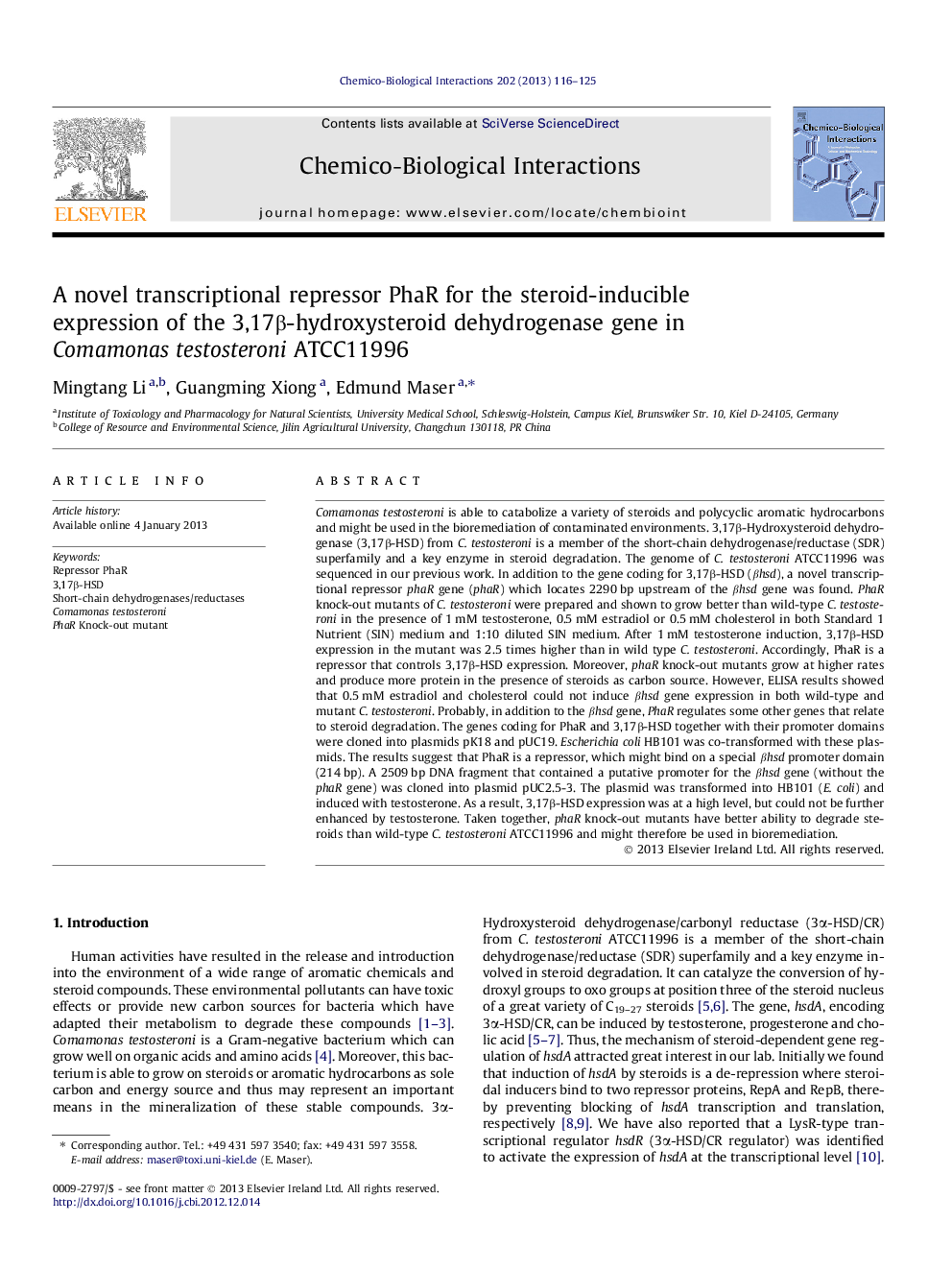| کد مقاله | کد نشریه | سال انتشار | مقاله انگلیسی | نسخه تمام متن |
|---|---|---|---|---|
| 2580648 | 1561635 | 2013 | 10 صفحه PDF | دانلود رایگان |

Comamonas testosteroni is able to catabolize a variety of steroids and polycyclic aromatic hydrocarbons and might be used in the bioremediation of contaminated environments. 3,17β-Hydroxysteroid dehydrogenase (3,17β-HSD) from C. testosteroni is a member of the short-chain dehydrogenase/reductase (SDR) superfamily and a key enzyme in steroid degradation. The genome of C. testosteroni ATCC11996 was sequenced in our previous work. In addition to the gene coding for 3,17β-HSD (βhsd), a novel transcriptional repressor phaR gene (phaR) which locates 2290 bp upstream of the βhsd gene was found. PhaR knock-out mutants of C. testosteroni were prepared and shown to grow better than wild-type C. testosteroni in the presence of 1 mM testosterone, 0.5 mM estradiol or 0.5 mM cholesterol in both Standard 1 Nutrient (SIN) medium and 1:10 diluted SIN medium. After 1 mM testosterone induction, 3,17β-HSD expression in the mutant was 2.5 times higher than in wild type C. testosteroni. Accordingly, PhaR is a repressor that controls 3,17β-HSD expression. Moreover, phaR knock-out mutants grow at higher rates and produce more protein in the presence of steroids as carbon source. However, ELISA results showed that 0.5 mM estradiol and cholesterol could not induce βhsd gene expression in both wild-type and mutant C. testosteroni. Probably, in addition to the βhsd gene, PhaR regulates some other genes that relate to steroid degradation. The genes coding for PhaR and 3,17β-HSD together with their promoter domains were cloned into plasmids pK18 and pUC19. Escherichia coli HB101 was co-transformed with these plasmids. The results suggest that PhaR is a repressor, which might bind on a special βhsd promoter domain (214 bp). A 2509 bp DNA fragment that contained a putative promoter for the βhsd gene (without the phaR gene) was cloned into plasmid pUC2.5-3. The plasmid was transformed into HB101 (E. coli) and induced with testosterone. As a result, 3,17β-HSD expression was at a high level, but could not be further enhanced by testosterone. Taken together, phaR knock-out mutants have better ability to degrade steroids than wild-type C. testosteroni ATCC11996 and might therefore be used in bioremediation.
Journal: Chemico-Biological Interactions - Volume 202, Issues 1–3, 25 February 2013, Pages 116–125